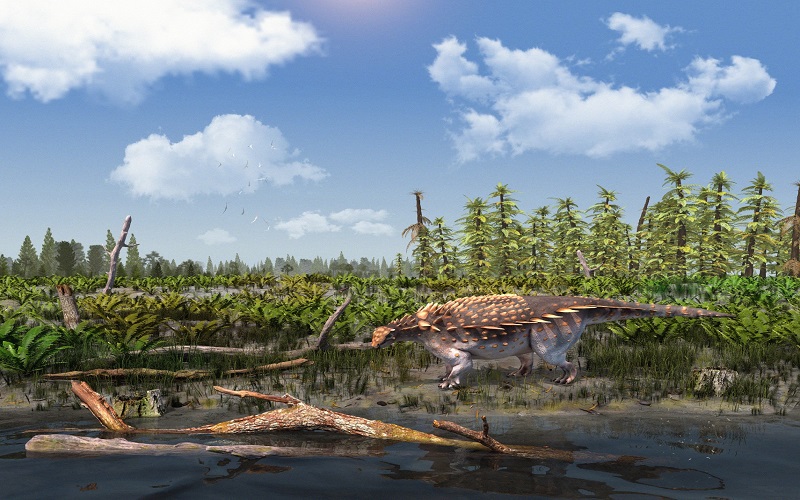A remarkable discovery has unveiled a new species of armoured dinosaur, an ankylosaur – which has been named after a Natural History Museum professor.
The prestigious recognition pays tribute to Professor Paul Barrett, a leading authority on dinosaurs at the Natural History Museum, and highlights his influential contributions to vertebrate palaeontology.
The dinosaur, named Vectipelta barretti, marks the first official identification of an armoured dinosaur from the island in 142 years.
Professor Barrett said: “I’m flattered and absolutely delighted to have been recognised in this way, not least as the first paper I ever wrote was also on an armoured dinosaur in the NHM collections. I’m sure that any physical resemblance is purely accidental.”
The professor has worked at the Natural History Museum, London for 20 years and in that time has published an impressive 220 scientific papers. He has also supervised 31 PhD students and mentored many others, encouraging a whole new generation of palaeontologists.
On naming the new dinosaur for Professor Barrett, senior author Dr Susannah Maidment of Vectipelta barretti said: “We really wanted to thank him for his support and mentorship, so we decided to name a slow-moving, spikey organism after him.”
Found in the Wessex formation, Vectipelta barretti stands out with unique features, distinct from the previously known Polacanthus foxii.
Its fossilized remains exhibit variations in neck and back vertebrae, a different pelvic structure, and blade-like spiked armour.
Through extensive analysis, researchers revealed that Vectipelta is closely related to Chinese ankylosaurs, suggesting intercontinental dinosaur migrations during the Early Cretaceous.
This finding holds crucial implications for understanding ancient mass extinction events and subsequent life recovery.
Vectipelta barretti existed during a sparsely documented period, making the Isle of Wight and the Wessex Formation pivotal in unravelling the mysteries of this era.
With a Mediterranean-like climate and sprawling floodplains, the island provided ideal conditions for preserving fossils through the isolation of organic material in drying ponds
Excitement lingers as researchers anticipate more discoveries in the area.
Ongoing preparations include the study of new iguanodontians and at least two additional ankylosaur taxa, promising a deeper understanding of dinosaur diversity.
The internationally renowned Dinosaur Isle Museum, home to this significant find, will proudly exhibit parts of Vectipelta barretti during the upcoming school holidays.
The dedicated work of museum staff and volunteers has made this research possible, meticulously cleaning the bones for scientific study.
The paper Vectipelta barretti, a new ankylosaurian dinosaur from the Lower Cretaceous Wessex Formation of the Isle of Wight, UK, is published in the Journal of Systematic Palaeontology.
Featured image credit: Vectipelta barretti Stuart Pond





Join the discussion